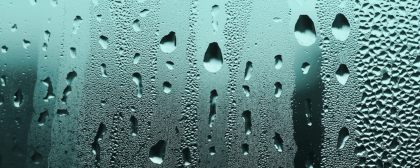 Larry Barnett lives in Sonoma where he was elected to three terms on the City Council and served twice as Mayor. A thirty-three-year resident, he currently serves as Chair of Sonoma's Planning Commission. He has been married for 48 years, has two daughters and three grandchildren.
Larry Barnett lives in Sonoma where he was elected to three terms on the City Council and served twice as Mayor. A thirty-three-year resident, he currently serves as Chair of Sonoma's Planning Commission. He has been married for 48 years, has two daughters and three grandchildren.
If water could talk

Mother Nature came crying to me last night.
“I’ve had it,” she said,
her tears falling loudly on the skylight,
“I’m done.”
But the creeks, dear one, had heard it all before,
And just laughed.
Life as we know it is impossible without water. Water is both a catalytic agent and a medium, forming the colloid that fills cells and providing a hospitable environment for proteins and their interactions. Ours is a watery world, and it’s likely that from within those waters life began and emerged onto land billions of years ago.
As to how earth gained its water, there’s only speculation. Some believe our water was delivered by icy comets that struck the earth after its formation. Another theory is that an abundance of hydrogen interacted with the products of earth’s magma, including oxygen. Nearly all the elements we know of were produced through star birth and death, scattered throughout the galaxy and combining into various forms of matter. Whatever its source, the story of earth’s water includes the story of life.
As we all know, water can easily change form, what science calls phase change. It’s presence as liquid, solid, and vapor ensures that the entirety of earth’s living system is constantly bathed. It’s density in the atmosphere is a contributing source of air pressure as it falls into the puckered-up gravity well created by the earth’s massive distortion of the fabric of spacetime. While it’s easy to forget, when at sea level all of us endure 14.7 pounds of air pressure upon every square inch of our bodies. Although it seems largely empty, our movements through earth’s ocean of air produce eddies and whirlpools just as surely as do the movements of fish in water.
If water could talk, what tales would it tell? It’s been here so long that it’s seen everything. “I have travelled with you for as long as you have walked,” it might say. “I fill your bodies so you can carry me where I want to go. I quench your thirst, moving between pauper and king and back again so many times it’s impossible to count. I flow, freeze, and float above you, watching and waiting to fall among you as rain. I’m a shapeshifter; tell me what you need me to be! If love is a thing, I am as close to love as you can get.”
It goes on. ”What is love you ask? Love is desire, and next to your first breath, I am your greatest desire, the mother’s milk of life. Where you go, I go. If that’s not love, dear one, what is?”
Two atoms of hydrogen and one of oxygen form a powerful love triangle, a molecular ménage a trois. Sharing electrons is an intimate business, and that’s the shenanigans behind each water molecule. Electrostatic covalent bonds keep the atoms hugging each other tightly, the stability of water molecules induced through this deep nuclear embrace.
Electrostatic energy underlies chemistry here on earth – the way elements combine – including the biochemical elements of life. It’s fitting that the hydrogen atom, the most abundant in the universe but the simplest, having only one electron – surely the loneliest of all atoms – would hook up with oxygen. Everybody desires a friend, and as elements go, oxygen is hot.
“As long as you live, I will never leave you,” sings water. “Can you feel the love?”



